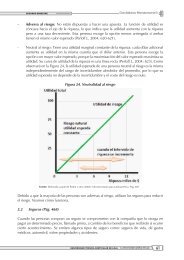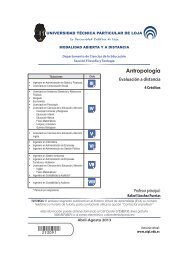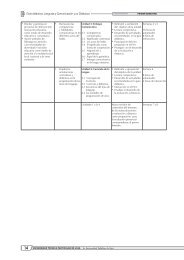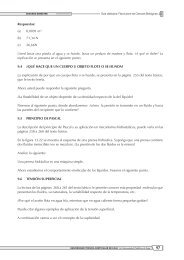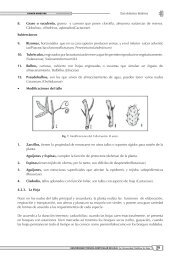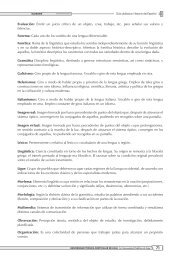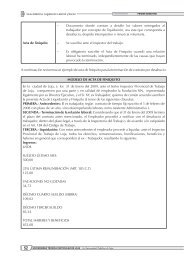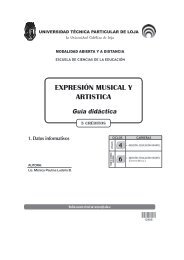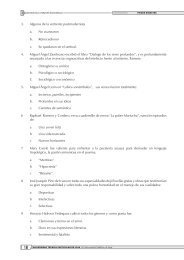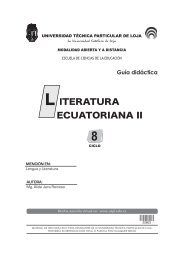Communicative Grammar III - Bad Request - Universidad Técnica ...
Communicative Grammar III - Bad Request - Universidad Técnica ...
Communicative Grammar III - Bad Request - Universidad Técnica ...
You also want an ePaper? Increase the reach of your titles
YUMPU automatically turns print PDFs into web optimized ePapers that Google loves.
Guía didáctica: <strong>Communicative</strong> <strong>Grammar</strong> <strong>III</strong><br />
Will the temperature reach the twenties?<br />
_______________________________________________________________<br />
You can take a look now at the charts in the “<strong>Grammar</strong> Presentation” section. You will see the structures of<br />
sentences that use the modals studied. After that, read the explanations and examples in the “<strong>Grammar</strong><br />
notes” section.<br />
Until now you have studied how to form sentences that use “may”, “might”, and “could” to express<br />
expectations. Now you are ready to work on the exercises in the sections called “Focused Practice”<br />
and “Communication Practice” in your textbook. These activities will allow you to practice the use of<br />
aforementioned modals.<br />
Well, with these activities we have concluded this topic. If you have any difficulty when doing the<br />
exercises, you can review the “<strong>Grammar</strong> Notes” section again or you can call me or send me an e-mail. If<br />
everything is clear, let’s study the next topic.<br />
8.5. Conclusions: Must, Have (got) to, May, Might, Could, Can’t<br />
This topic focuses on the meanings and uses of “must”, “have (got) to”, “may”, “might”, “could”, and “can’t” to<br />
express conclusions.<br />
We will start by reading an excerpt from a Sherlock Holmes story called “the Read-Headed League.”<br />
You will find this interesting text in the section “<strong>Grammar</strong> in Context” in your textbook. You can do the<br />
activities “Before you Read” and “After you Read” as well.<br />
Before we continue please read the following cultural note:<br />
CULTURAL NOTE<br />
“Sir Arthur Conan Doyle wrote the Sherlock Holmes stories at the end of the 19 th century. Holmes, a<br />
fictional character, was one of the first detectives. He used his powers of observation to make deductions<br />
to help him solve crimes. He was often accompanied by his friend, Dr. Watson, who was not as brilliant<br />
as Holmes.” Tiberio (2006)<br />
Interesting, isn’t it? It’s time to work on the following Exercise:<br />
Exercise:<br />
Why is Wilson visiting Holmes?<br />
_______________________________________________________________<br />
UNIVERSIDAD TÉCNICA PARTICULAR DE LOJA La <strong>Universidad</strong> Católica de Loja 63



